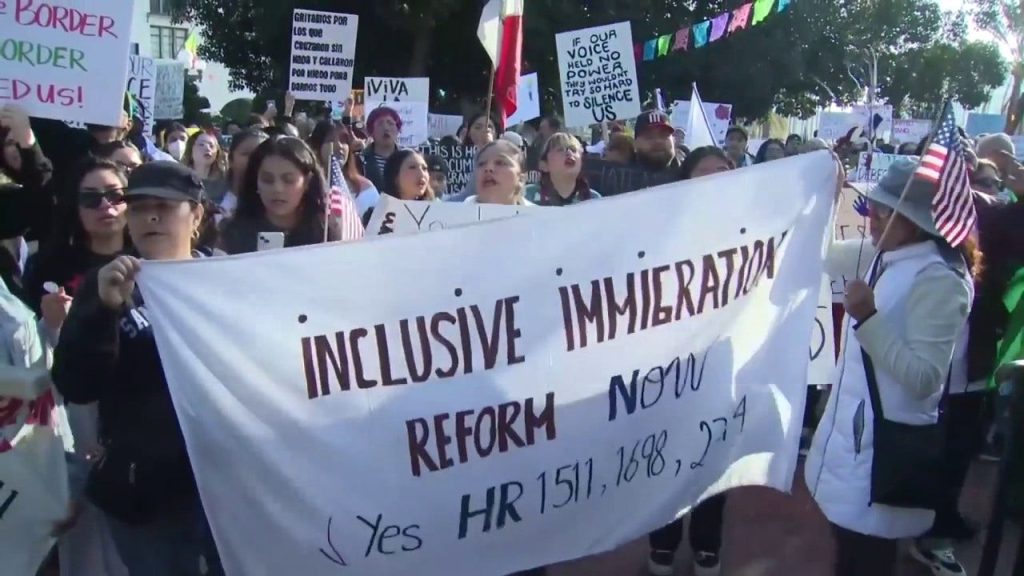The weekend of March 4th and 5th, 2024, witnessed a surge of anti-deportation protests across several American cities, including Glendale, Arizona, Los Angeles, Houston, and Atlanta. These demonstrations arose in response to the Trump administration’s renewed hardline stance on immigration, characterized by a push for mass deportations. The protests in Glendale, Arizona, escalated into confrontations with law enforcement, marking a volatile start to the renewed immigration debate under the Trump administration.
The Glendale protests, initially focused on federal immigration policies, took a dramatic turn as the situation intensified. Glendale Police reported that a protestor briefly commandeered a police vehicle before it was swiftly recovered. As the demonstration continued, the atmosphere grew increasingly tense, with reports of several officers being assaulted, police vehicles sustaining damage, and nearby businesses and personal property also being affected. Police deployed chemical agents to disperse what they described as an “unruly and defiant crowd.” The events in Glendale underscore the heightened tensions surrounding immigration policy and the potential for such protests to escalate into confrontations with law enforcement.
The broader context for these protests is the Trump administration’s declared objective of significantly increasing deportations. Leaked reports suggest that the administration aims to detain and deport between 1,200 to 1,500 individuals daily, a substantial increase from previous levels. This aggressive approach represents a stark departure from the prior administration’s more targeted deportation strategy, which prioritized the removal of individuals with criminal records. The Trump administration’s declared intent to deport all undocumented immigrants, regardless of criminal history, has fueled concerns among immigrant rights advocates and sparked the widespread protests.
The administration’s rhetoric on immigration has further inflamed the debate. White House Press Secretary Karoline Leavitt asserted that all individuals residing in the U.S. without authorization are “criminals,” a claim that misrepresents the legal distinction between civil and criminal violations. While unauthorized border crossing is a criminal offense, simply being present in the U.S. without legal documentation is a civil violation. This mischaracterization, coupled with the administration’s stated goal of mass deportations, contributes to the growing anxiety within immigrant communities and serves as a rallying cry for protest movements.
The Trump administration’s justification for its mass deportation policy rests on the premise of enforcing existing immigration laws and prioritizing national security. President Trump, in his inaugural address, pledged to swiftly deport “millions and millions” of individuals with criminal records, a figure that has been challenged by various sources. Data suggests that the actual number of undocumented immigrants with criminal records is significantly lower than the president’s estimate. Furthermore, studies indicate that both legal and undocumented immigrants have lower crime rates compared to U.S. citizens, casting doubt on the administration’s rationale for prioritizing mass deportations as a crime-fighting measure.
The protests in Glendale and other cities represent a powerful response to the Trump administration’s immigration policies. These demonstrations highlight the deep divisions within the country on immigration issues and the potential for further unrest. The administration’s emphasis on mass deportations, coupled with its rhetoric characterizing all undocumented immigrants as criminals, has created a climate of fear and uncertainty within immigrant communities. The ongoing protests serve as a visible manifestation of the opposition to these policies and signal the likelihood of continued activism and legal challenges as the debate over immigration policy intensifies. The clash in Glendale serves as a stark reminder of the potential consequences of the administration’s hardline approach, foreshadowing a likely protracted and contentious period in the nation’s immigration saga.

